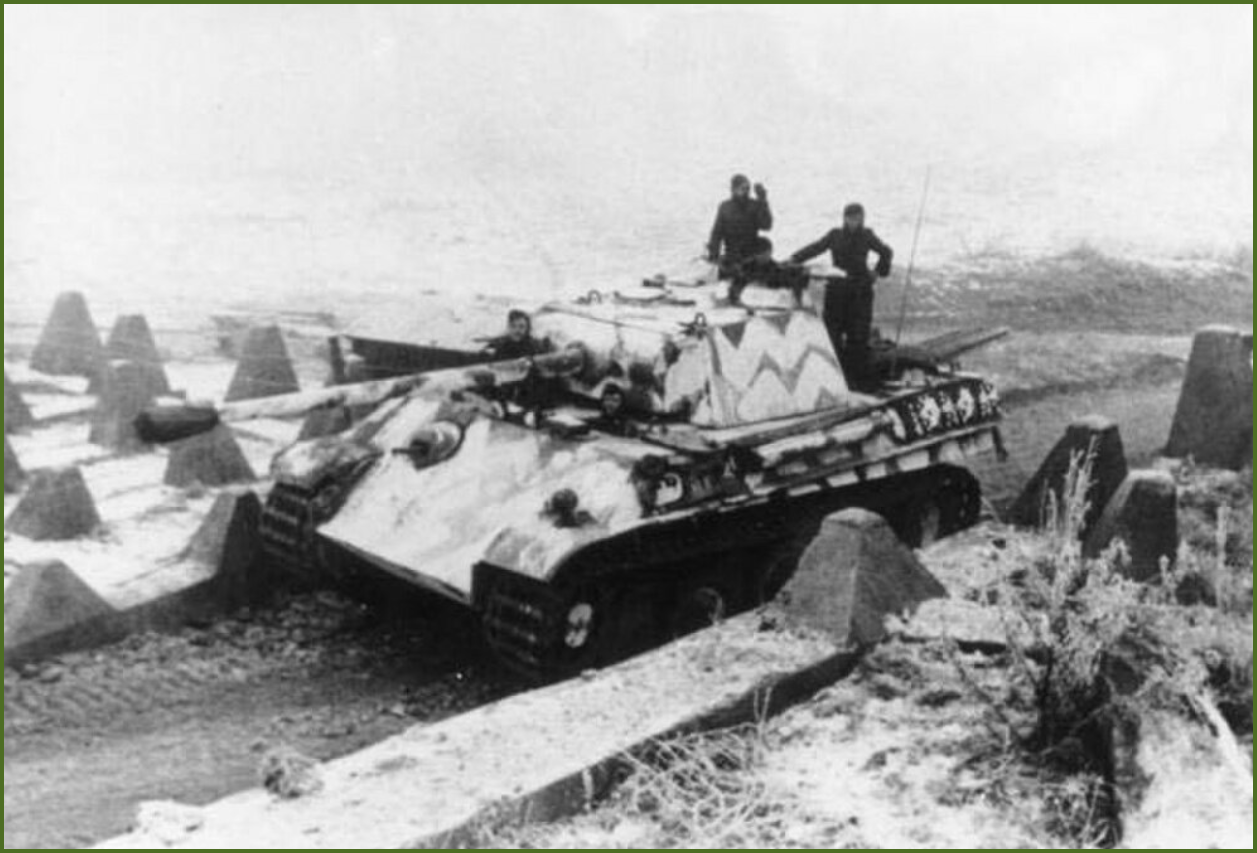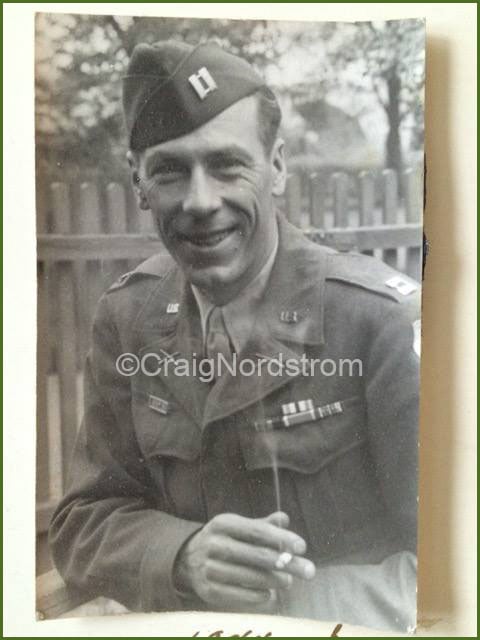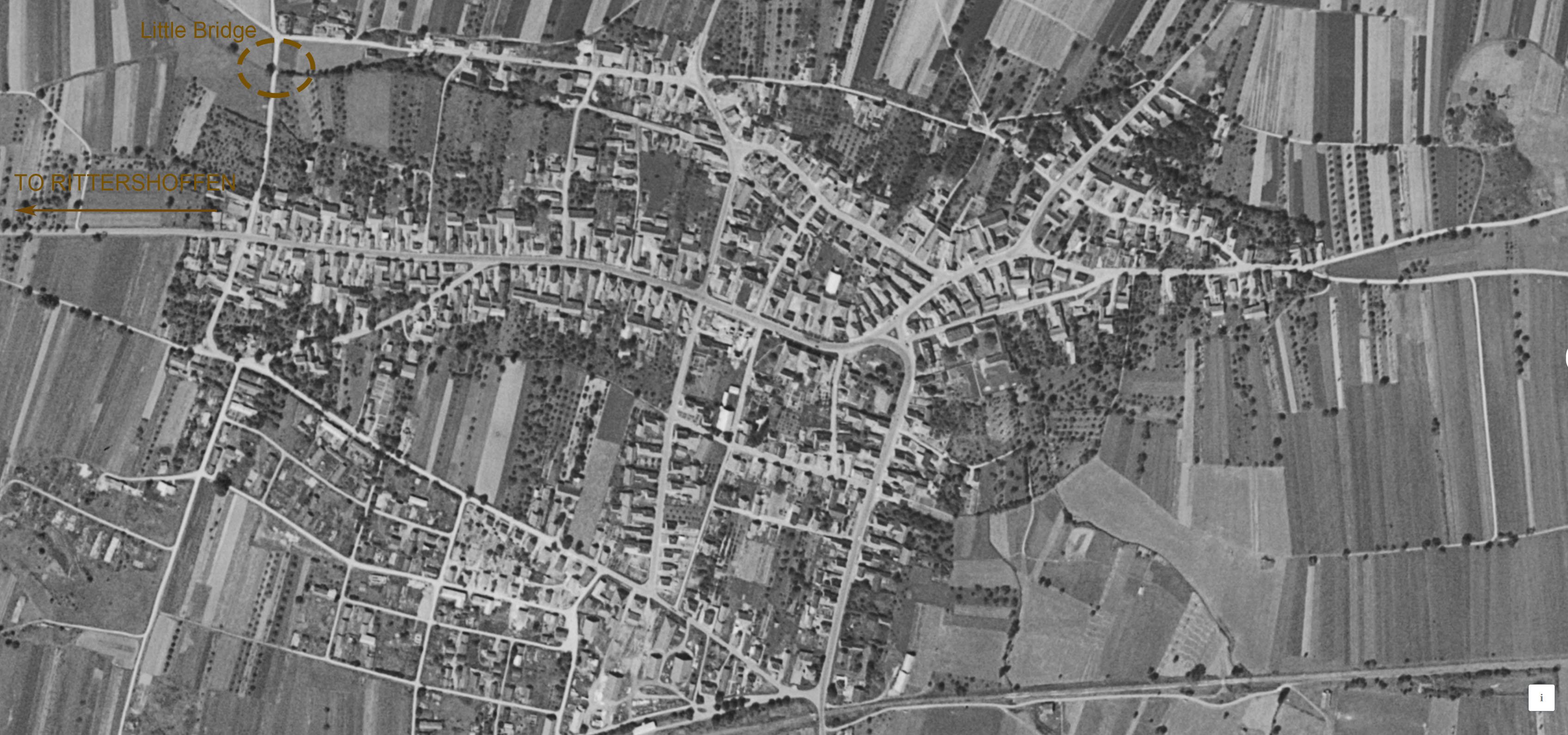Two once pretty Alsatian villages lost in the countryside. These words perfectly define Rittershoffen and Hatten, no one lives there and according to US soldiers no one would like but these two places became the central point of the German counterattack in Alsace.
In the early days of January 1945, two battalions from the 25th Panzergrenadier Division had taken key pillboxes on the Maginot Line at the northeast of Hatten and had with them one-hundred vehicles. Needless to say, they were ready to fight and to break through the 7th US Army’s lines. The objective ? Villages of Hatten and Rittershoffen.
The enemy attack jumped off on January 9th,1945, with as usual, an artillery barrage laid on both towns. Coming from the southeast of Hatten with sixteen tanks, fifteen tanks from the northeast and followed at a short distance by seventeen personnel carriers, MLR* was broken. On the run, “C” Company of the 242nd Infantry Regiment of the 42nd Infantry Division having its lines destroyed went back to Hatten, “A” and “B” Companies held their very fragile lines but also withdrew back to the village. Those units were in a very great danger of being isolated and surrounded in Hatten. Reinforcements had to be brought up. *Main Line of Resistance.

German Panther from the 25th Panzer Division crosses a checkpoint near Wissembourg, France, January 6th, 1945, during the opening phase of Operation Northwind - ©USArmy
2nd Battalion of the 315th Infantry Regiment of the 79th Infantry Division was eating its noon meal, when orders were received to move to Rittershoffen where 242nd Infantry Regiment Command Post was, to assist their 1st and 2nd Battalions. Once there, things started to quiet down, but the most important thing was to reestablish the MLR.
315th Infantry Regiment moving up along the road to Rittershoffen - ©CombatReels
“F” and “G” Companies each with a section of heavy weapons of “H” Company were sent to Hatten for the purpose. Lieutenant-Colonel Earl F. Holton, commanding 2nd Battalion would be supported by tanks from the 48th Tank Battalion which were previously supporting the 242nd Infantry Regiment. He was then informed those tanks would be relieved by those from the 728th Tank Destroyer Battalion.
(Note: “E” and “H” Companies were held in reserve in Rittershoffen.)
Having been informed of that and assuming it would be correct, Lieutenant-Colonel Holton wanted to use tanks as strongpoints to form a "V" shape line. To do so, “G” Company would have to contact those at the south of Hatten and form a defensive line between them and 1st Battalion’s Command Post of the 242nd Infantry Regiment. “F” Company went north and met the other tanks, 200 to 300 yards on the road running in direction of Stundwiller by doing the same thing as “G” Company.

On its way Captain Ralph D. Shrewsbury Commanding Officer of “G” Company was precautious because of darkness, chances to meet enemy soldiers were too big, a patrol of twenty men to contact tanks was sent. This move turned to be fortunate as instead of finding friendly tanks, patrol stumbled into an enemy trap near the railroad at the south.
Germans were smart, they had the time to see the patrol coming up, waited men to be within 10 yards away and opened fire with their machine gun. Technical Sergeant Paul W. Duncan, leading the patrol was seriously wounded by a blast from an M-VI tank as he and others were trying to go back onto the main street. More fortunate ones found cover inside buildings and worked back to the company’s command post….only eight of them came back.

Upon the return of what was remaining of the patrol Captain Shrewsbury didn’t have the choice but to send another patrol with the same order, and Battalion Headquarters gave the patrol an additional order “Bring back the wounded and fallen”. Same fate, 2nd Patrol didn’t succeed in working its way out of town and retired with the remainder of “G” Company to the southwest of Hatten.
 Former location of the Hatten train station - ©IGNMap 2022
Former location of the Hatten train station - ©IGNMap 2022
While patrols of “G” Company were badly shacked, “F” Company was more fortunate and found one friendly tank thanks to its tracks in the snow but because of darkness did not take position where it had to. Captain Tennyson L. Nordstrom commanding the company set up a roadblock in the main street as he learned that near the train station on the southern edge of the town enemy had three Tiger Tanks moving up to the east.
 Captain Tennyson L. Nordstrom - ©CraigNordstrom
Captain Tennyson L. Nordstrom - ©CraigNordstrom
Night from January 9th to the 10th was pretty rough, everyone and everything were mixed up, Germans were infiltrating from all directions in the village. “F” and “G” Companies have been harassed nonstop, friend could have been easily get mingled with foe but the most critical place was the area around the school where the 242nd Infantry Regiment had two Battalion’s Command Posts.
An example of the situation, one German nicknamed by the soldiers “Jerry Sad Sack” carried five pails of hot soup, came stumbling into one of the houses temporarily occupied by “F” Company, blinking at the occupants he realized he had come to the wrong address.
Couple of minutes after daylight, boys of “F” Company started east down the main street in the southern part looking out the houses for enemy troops. Mostly of the enemy fire was received from the northern part (small arm fire, antitank fire, tank fire and artillery fire.) To allow men to advance through town, 1st Lieutenant Morris W. Goodwin requested artillery fire at 0800am, getting results, all houses in the street to a junction with the Stundwiller road, about two blocks west of the church were cleaned up and taken.
At 0815 hours, 2nd Battalion of the 315th Infantry Regiment assisted by tanks from the 14th Armored Division had to launch an attack to reestablish the MLR, Germans decided otherwise. How so? At 0725am four tanks from the 827th Tank Destroyer Battalion were in position at the north of Hatten with infantry troops dug-in all around them, tank crews reported to receive heavy small arm fire with enemy troops attacking.
US tanks taking position around Hatten - ©CombatReels
German troops, supported by five tanks struck the northern part of Hatten and unfortunately two US tank destroyers were knocked out forcing the others to withdraw to Rittershoffen. Increasing and becoming stronger and more dangerous as time went on, German fire forced both companies back to their original positions, against the advice of higher headquarters.
The attack to retake Hatten didn’t really start, although “F” Company was cleaning up houses, “G” Company with tanks tried to seize the railroad station. None of the attacks planned by both sides worked as when 1st Lieutenant Goodwin called for an artillery barrage to save his platoons he had under his command, according to information gained, artillery stopped all of enemy soldiers and tanks.
While “F” and “G” Companies tried to defend Hatten as they could, 1st Lieutenant David R. Harding commander of “E” Company had his men ready for the entry into the town. Not knowing how to get into it, he ordered his company to walk down the Rittershoffen – Hatten road and by 1100am “E” Company reached the entrance without meeting enemy artillery fire. He knew that the place has been turned into hell, and every crossroad or corner was an opening coffin, he took advice from “F” and “G” Companies commanding posts.
Being aware and briefed of the situation, 1st Lieutenant Harding made a personal reconnaissance in an attempt to discover what would be the best way to approach the main road. He discovered that there were several orchards and only few houses without many cover (All of which were on the third cross street from the west end of the town.)
Despite the lack of cover, the 1st Lieutenant sent his best assaulting unit he could make. He has chosen what he called to be his best rifle platoon led by 1st Lieutenant Luther J. Harrell.
This little Task Force jumped off at 1530pm, not alone of course as another platoon from the same company was acting as a support and 1st Lieutenant Harding was in the middle. By reaching a small bridge about 50 yards from the north crossroad, 1st Lieutenant Harrell could see the first houses, unquestionably the open field was well covered by enemy fire. When he gave the order to his platoon to cross the open area Germans opened fire, at first with small arm fire giving the time to one squad to reach the first two houses.
 Small bridge 50 yards away from the first houses - ©IGNMap 2022
Small bridge 50 yards away from the first houses - ©IGNMap 2022
That was without counting on the camouflage art of the German tanks, one of them was perfectly camouflaged between two destroyed buildings. Tank crew after seeing men running without too much cover, turned on the engine, drove forward them and before the two other squads could come up men were machine gunned, scattered they ran everywhere to find cover like rabbits.
 German tank in Hatten - ©CombatHistory 21st PanzerDivision
German tank in Hatten - ©CombatHistory 21st PanzerDivision
(Note: Private Homer Hawkins (AAR Spelling) and two others were killed.)
1st Lieutenant Harding shouted an order for 1st Lieutenant Harrell to withdraw his platoon if he could use the covering provide by tanks of the 827th Tank Destroyers Battalion. Problem is, tank crews only saw the enemy tank and not the friendly troops, 1st Lieutenant Harrell’s men were under enemy and friendly fire at the same time. By seeing this, 1st Lieutenant Harding fired two light fuses in the sky to make understand tank crews to stop the fire, but it didn’t work. He then jumped into a jeep and headed to Rittershoffen, once there he asked to stop the friendly fire from the tanks.
 Tank from 14th Armored Division
Tank from 14th Armored Division
Tanks were not aware that friendly troops were trying to take the north street and thought the figures at the northwest of Hatten were enemies. Once back, “E” Company commander found out seven more of his men were casualties, but worst during the withdrawal because of the tank fire it has been impossible to bring one back. Regrouping his company, he decided it was too late to made another attempt, founding unoccupied houses between “G” and “F” Companies, him and his men took position precisely on the south side of the street.
The most heroic thing which happened during the day was from “F” Company. By 0200pm men of Captain Tennyson L. Nordstrom could not continue to hold their position, situation was so bad.
How do you want to hold your position when you have to fight against twelve enemy tanks at the same time?
One bazooka team from “G” Company was brought up but Captain Nordstrom needed tanks and tank destroyers so he called for them. BUT located between the west end of Hatten and the church, there was an abandoned and immobilized M-10 destroyer previously supporting 242nd Infantry Regiment left behind by its crew. This obstacle for the Germans turned to be a very important strongpoint for US troops.
 Locations of M-10 Tank and church- ©IGNMap 2022
Locations of M-10 Tank and church- ©IGNMap 2022
While defending his position until death, Private First-Class Marsker, formerly a tank destroyer man operating as a machine gunner now, had an idea. He snooped around the knocked-out tank and with other men acted as a tank crew.
Tank was located at the end of the bend, it was impossible for German tanks coming from the direction of the church to see it, except once they would be already engaged in the bend but by this moment it would be too late for them. 76.2mm tank still had ammunitions but the improvised crew never used the gun during the day. Might be they didn’t know how to fire with it? Only God knows, but to make believe the enemy that they knew how to manage a tank, crew fired nonstop with its mounted machine gun.
 Hatten church - ©CombatHistory 14th Armored Division.
Hatten church - ©CombatHistory 14th Armored Division.
Once German tank crews had spotted it, none of them took the risk of a direct confrontation and all of them, without exception, withdrew as soon as they saw it.
During the first two days of battle for Hatten, 2nd Battalion of the 315th Infantry Regiment had trouble caused by a perfectly German coordinated attack which took them to northeast of it.
These assaults were being made by troops of different caliber from those that the 79th Infantry Division, less than two months before, had pushed back from this area. These German soldiers were big, obviously not boys, fighting like the veterans. Infantry supported by tanks was the basis for most of the thrusts and worked in perfect unison. Recovery of knocked out vehicles and troop casualties, was a constant source of amazement. And what tenacity. It was quite common, for instance, for enemy crews to hold out in or behind their demolished vehicles until the bitter end.
Written by Pierre Fallet - Normandy American Heroes.

















